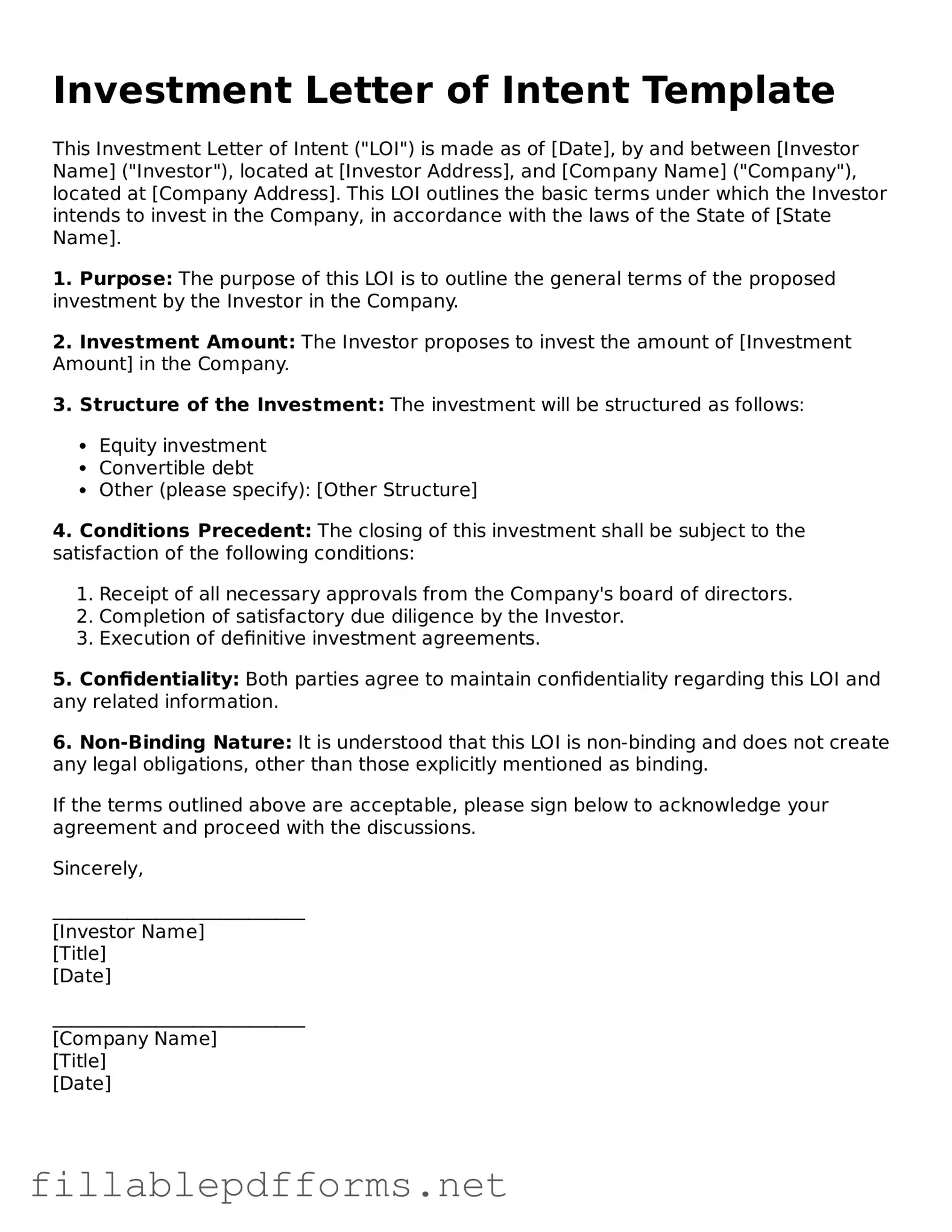The Investment Letter of Intent (LOI) serves as a crucial preliminary document in the world of investment, paving the way for potential partnerships and funding opportunities. This form outlines the intent of one party to invest in a business or project, establishing a framework for negotiations and guiding future discussions. Typically, it includes key details such as the amount of investment, the structure of the deal, and the anticipated timeline for due diligence and closing. By laying out these fundamental aspects, the LOI helps both investors and entrepreneurs align their expectations and objectives. Importantly, while the LOI is not legally binding, it signifies a serious commitment from the investor, demonstrating their interest in moving forward. Additionally, the document may address confidentiality agreements and exclusivity clauses, further solidifying the relationship between the parties involved. Understanding the nuances of the Investment Letter of Intent can empower investors and businesses alike to navigate the complex landscape of investment negotiations with clarity and confidence.
